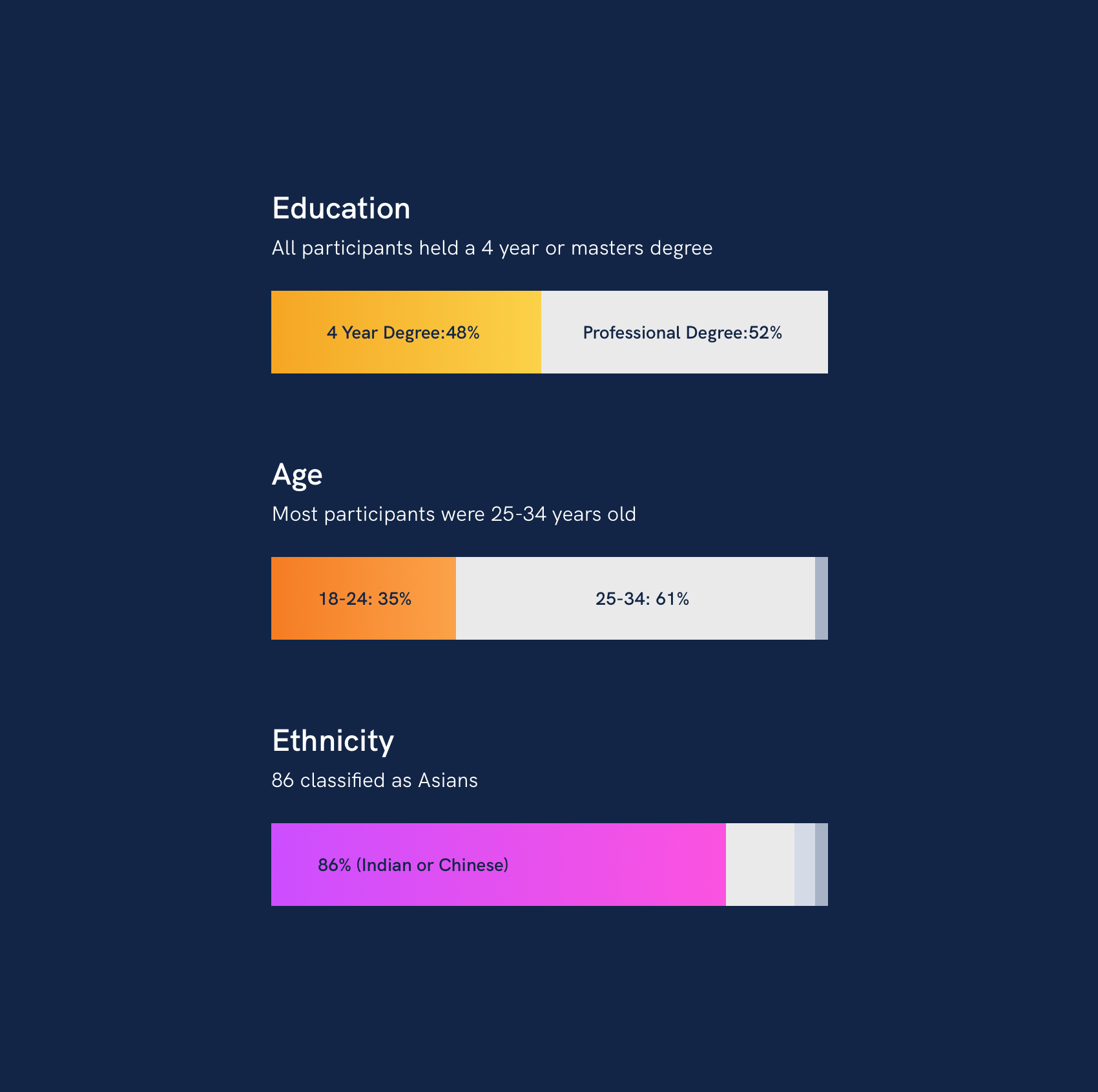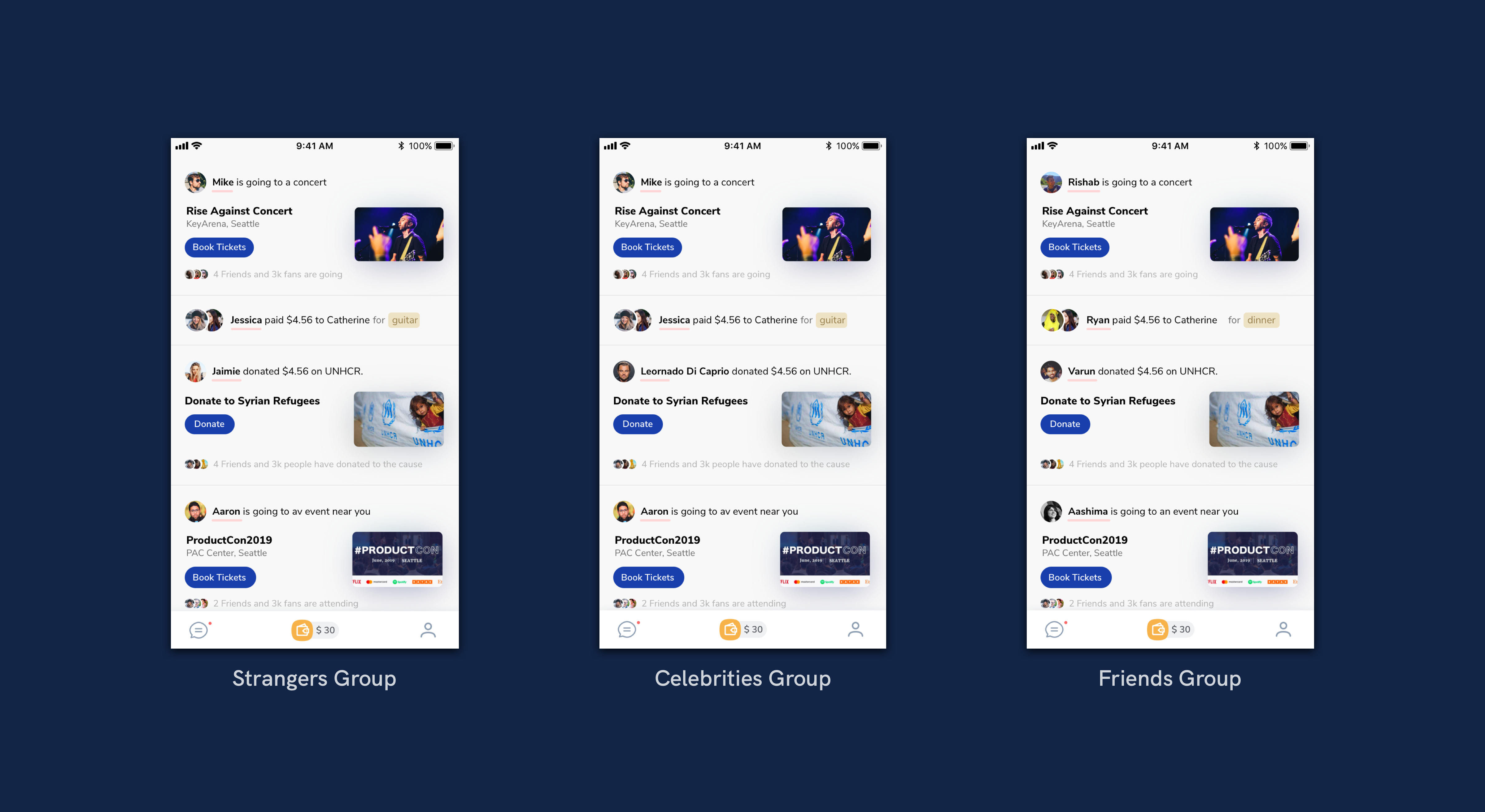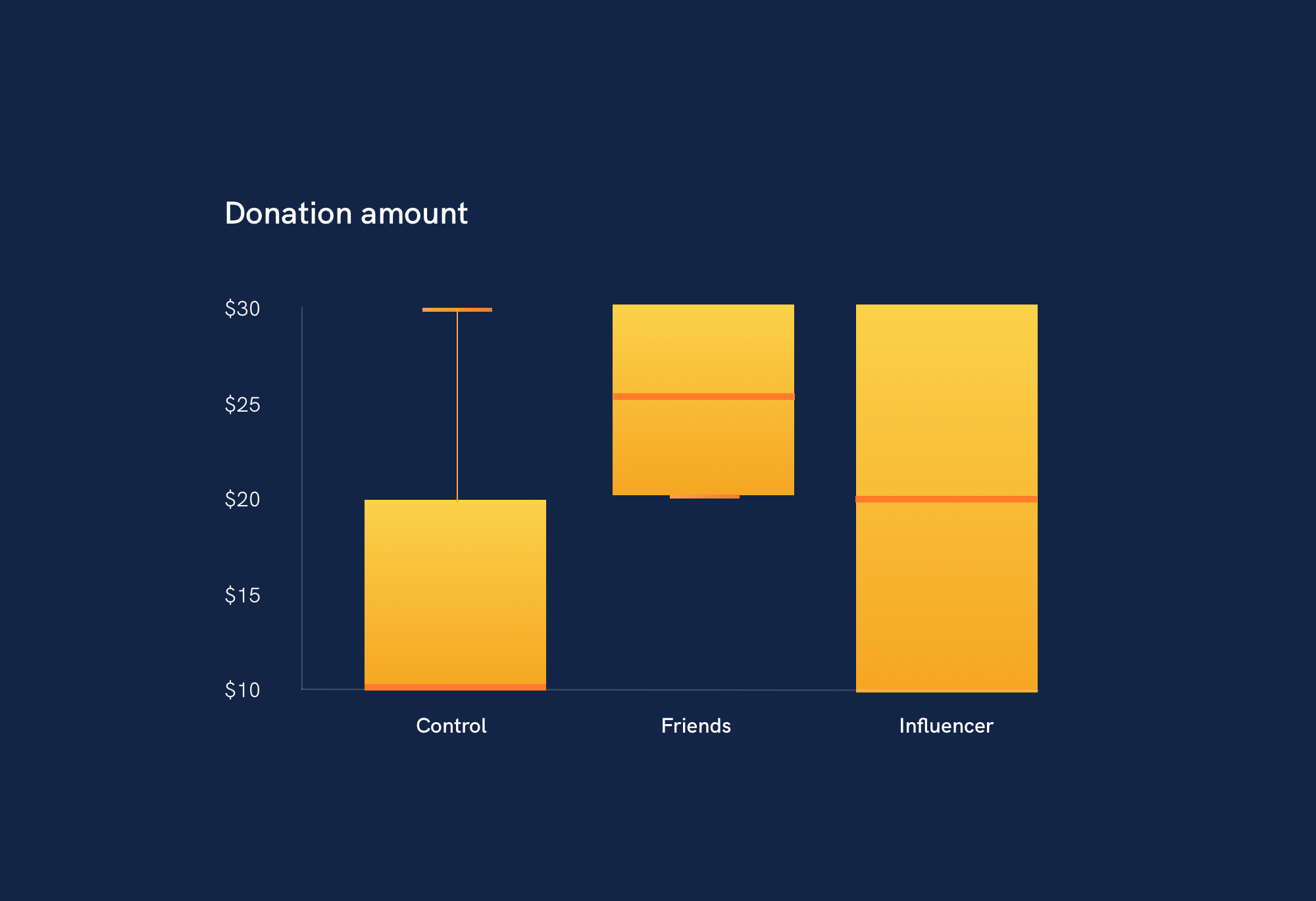Hypotheses
-
H1 (Hypothesis): The presence of donations from friends increases likelihood of participant’s action to donate.
-
H0 (Null Hypothesis): The presence of donations from friends will not change likelihood of participant’s action to donate.
Task Design
The experiment used the concept of using a fictional payments app called PayNoww. A high fidelity interactive Invision alternative prototype was created to simulate the experience of booking events and donating to a cause on the home feed (social newsfeed). We distributed a Google Sites page with the prototype along with pre and post survey links to each participant. Each participant’s PayNoww account was credited with USD 30 which was informed at the beginning of the experiment.
The prototype was modified for each participant group:
-
The stranger's group was given a prototype where the feed showed strangers sending money and booking event tickets and donating to a cause (Syrian war).
-
The celebrity group had an celebrity, in this case, Leonardo Dicaprio, a well-known philanthropist, donating to a cause (Syrian war).
-
The friend's group’s prototype was modified by including a friend from their Facebook friends list donating to a cause (Syrian war).
Two different surveys were included in this experiment. Each participant was required to participate in a pre-survey followed by interaction with the Invision prototype. The participant’s interactions with the prototype were tracked through an analytic tool called Maze. At the end of the session, each participant was given a code that they had to paste in the post-survey to validate if they completed the usability study of the prototype. After the completion of the usability study, participants were requested to take a post-survey.
-
The Pre-Survey collected demographic information. The participants were asked to provide their gender, age, ethnicity, level of education, marital status, and family income.
-
The Post-Survey asked participants how much amount they donated out of the USD 30 provided in their virtual wallet.
Participants’ responses were filtered and curated by following parameters:
-
Each participant account could only submit one response to one task
-
Each IP address can only submit one response to one task
-
Participants were restricted within groups to U.S. and Indian citizens over the age of 18 years
-
Participants were randomly assigned groups to test the survey and prototype








